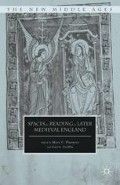Abstract
The Merchant’s Tale is as much a story about problems of reading and interpretation as it is a story about marriage. It also generates interpretive problems: scholars are unable to agree about how much readers are intended to sympathize with the various characters (nearly all of whom display unsavory traits), or about how to interpret the figure of the Merchant and his framing of the tale, since, as someone who claims to have had a particularly painful marital experience, he is hardly an unbiased narrator. The Merchant’s Tale also presents its characters as readers who are effective to greater or lesser degrees. The young wife May is both a text to be read and a reader: both her aged husband January and his young squire Damyan read her in terms of their desire for her, while she interprets opportunities such as Damyan’s love letter and January’s blindness in terms of how she can exploit them.1 January is depicted as a poor reader not only because he is blind to his wife May’s fornication even when it happens before his very eyes, but also because he misapplies scriptural metaphor: describing his anticipated wedded life as “hevene in erthe heere” (1647), he willfully ignores the fact that, in scriptural history, the earthly paradise of Eden was merely a precursor to the Fall of Man.2 Meanwhile, the Merchant narrator is the flawed reader behind the tale, claiming to be unable to read what May thinks “in hir herte” (1851) and appropriating biblical exempla to suit his needs.3
Access this chapter
Tax calculation will be finalised at checkout
Purchases are for personal use only
Preview
Unable to display preview. Download preview PDF.
Editor information
Copyright information
© 2016 Mary C. Flannery
About this chapter
Cite this chapter
Flannery, M.C. (2016). Privy Reading. In: Flannery, M.C., Griffin, C. (eds) Spaces for Reading in Later Medieval England. The New Middle Ages. Palgrave Macmillan, New York. https://doi.org/10.1057/9781137428622_10
Download citation
DOI: https://doi.org/10.1057/9781137428622_10
Publisher Name: Palgrave Macmillan, New York
Print ISBN: 978-1-349-68248-5
Online ISBN: 978-1-137-42862-2
eBook Packages: Literature, Cultural and Media StudiesLiterature, Cultural and Media Studies (R0)

